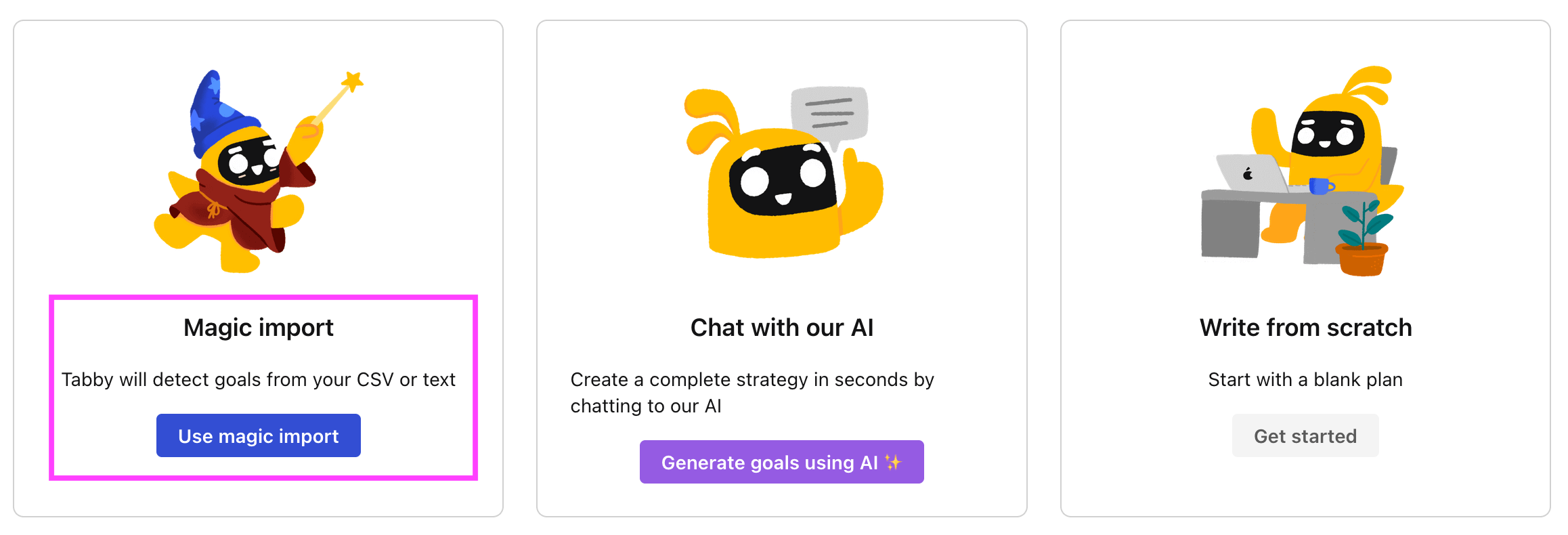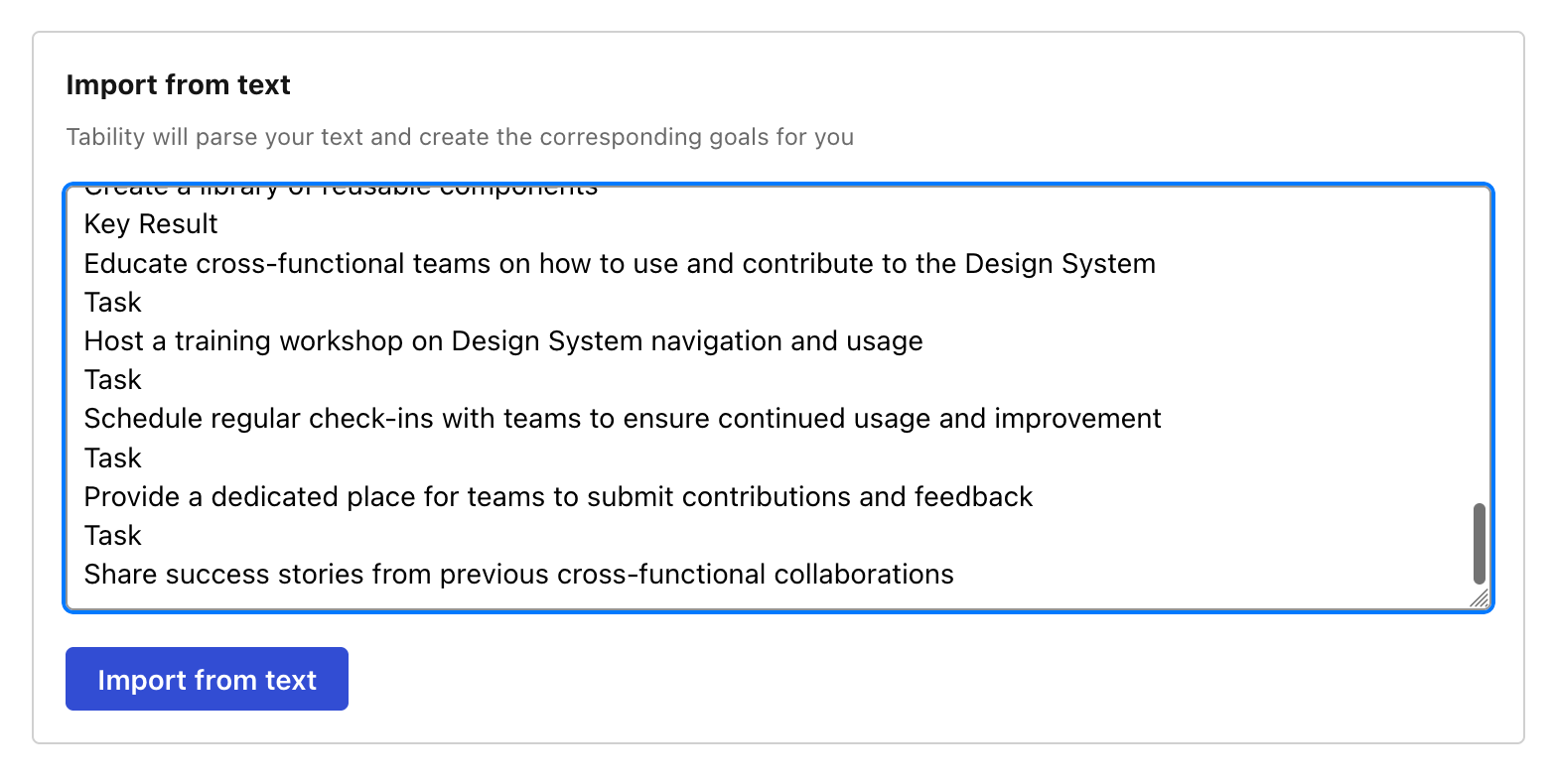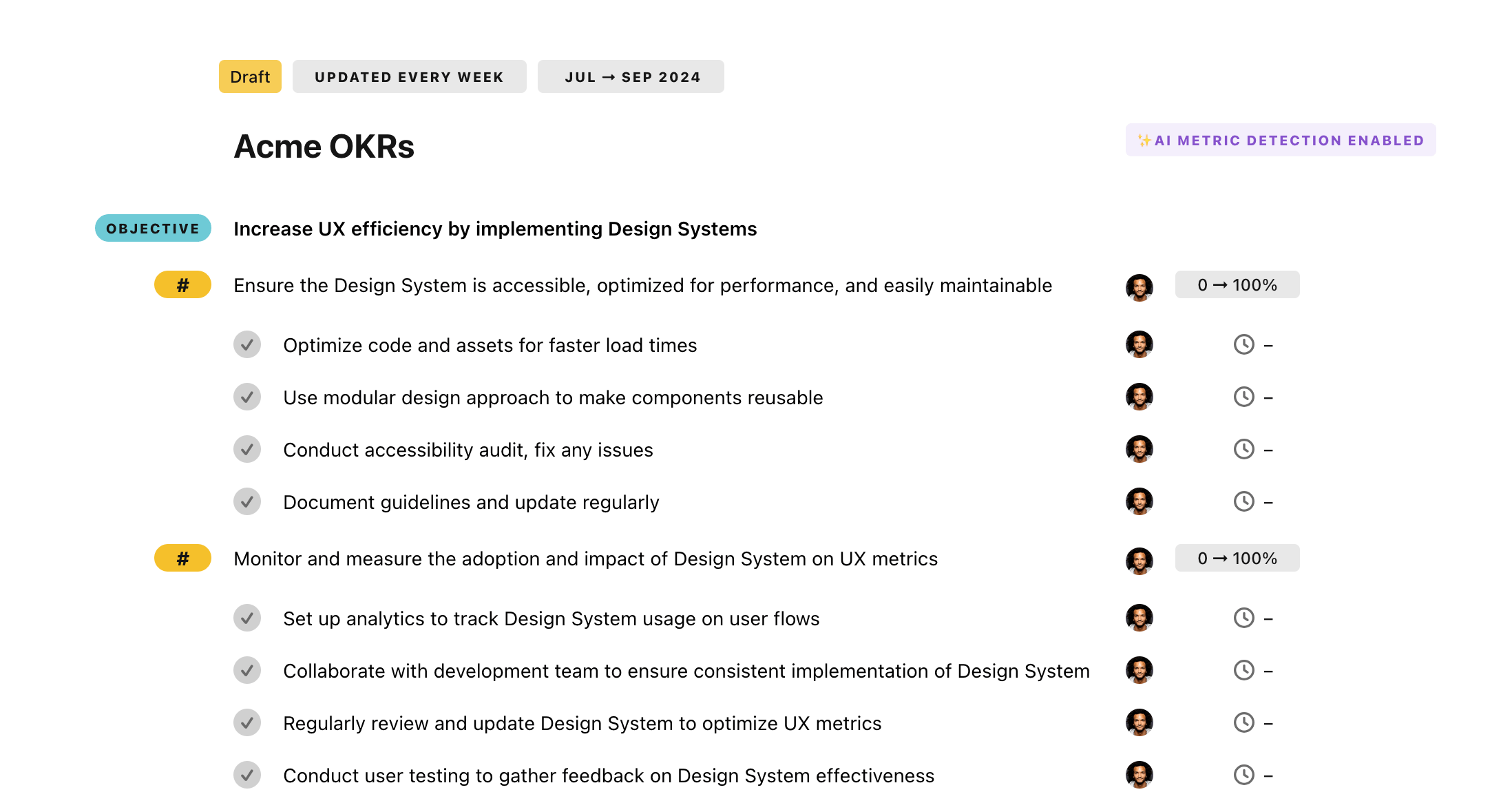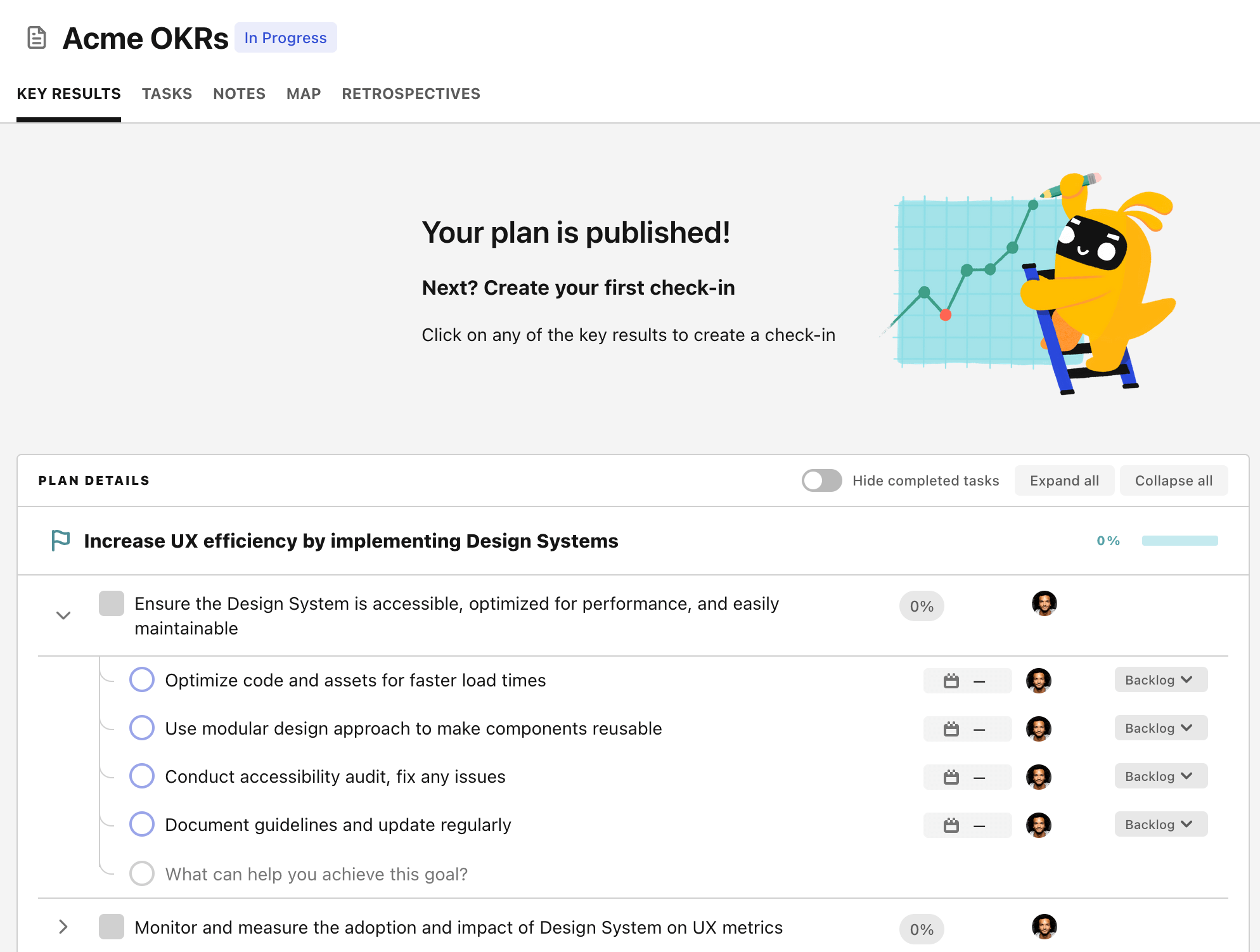OKR template to attain A2 Russian proficiency and excel in the TORFL exam
Your OKR template
The first outcome demands the completion of an online Russian A2 level course with a minimum pass mark of 85%. Some initiatives to reach this target include regular review of course material, setting aside specific study hours weekly, and registering for a suitable online course.
The second outcome demands a total of 15 hours of weekly Russian conversation practice with native speakers. Attaining this outcome would involve daily phrasal drills, scheduling weekly language practice sessions, and finding additional Russian language resources.
The third outcome involves scoring above 90% in at least five TORFL practice tests; initiatives involve correcting mistakes from each exam, completing weekly full-length TORFL practice exams, and establishing a daily study routine specifically for the TORFL.
ObjectiveAttain A2 Russian proficiency and excel in the TORFL exam
KRComplete online Russian A2 level course with a minimum pass rate of 85%
Regularly review and practice course material
Dedicate consistent study hours every week
Register for an online Russian A2 level course
KRPractice speaking Russian 15 hours per week with native speakers for fluency
Review and drill essential Russian phrases daily
Schedule weekly 15-hour Russian conversations with native speakers
Locate supplemental Russian language resources
KRScore 90% in five practice TORFL exams taken periodically
Review and correct all mistakes after each exam
Complete one full-length TORFL practice exam weekly
Establish a consistent daily study routine for TORFL
How to edit and track OKRs with Tability
You'll probably want to edit the examples in this post, and Tability is the perfect tool for it.
Tability is an AI-powered platform that helps teams set better goals, monitor execution, and get help to achieve their objectives faster.
With Tability you can:
- Use AI to draft a complete set of OKRs in seconds
- Connect your OKRs and team goals to your project
- Automate reporting with integrations and built-in dashboard
Instead of having to copy the content of the OKR examples in a doc or spreadsheet, you can use Tability’s magic importer to start using any of the examples in this page.
The import process can be done in seconds, allowing you to edit OKRs directly in a platform that knows how to manage and track goals.
Step 1. Sign up for a free Tability account
Go tohttps://tability.app/signup and create your account (it's free!)
Step 2. Create a plan
Follow the steps after your onboarding to create your first plan, you should get to a page that looks like the picture below.

Step 3. Use the magic importer
Click on Use magic import to open up the Magic Import modal.
Now, go back to the OKR examples, and click on Copy on the example that you’d like to use.

Paste the content in the text import section. Don’t worry about the formatting, Tability’s AI will be able to parse it!

Now, just click on Import from text and let the magic happen.

Once your example is in the plan editor, you will be able to:
- Edit the objectives, key results, and tasks
- Click on the target 0 → 100% to set better target
- Use the tips and the AI to refine your goals
Step 4. Publish your plan
Once you’re done editing, you can publish your plan to switch to the goal-tracking mode.

From there you will have access to all the features that will help you and your team save hours with OKR reporting.
- 10+ built-in dashboards to visualise progress on your goals
- Weekly reminders, data connectors, and smart notifications
- 9 views to map OKRs to strategic projects
- Strategy map to align teams at scale